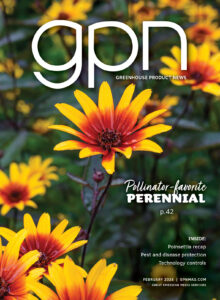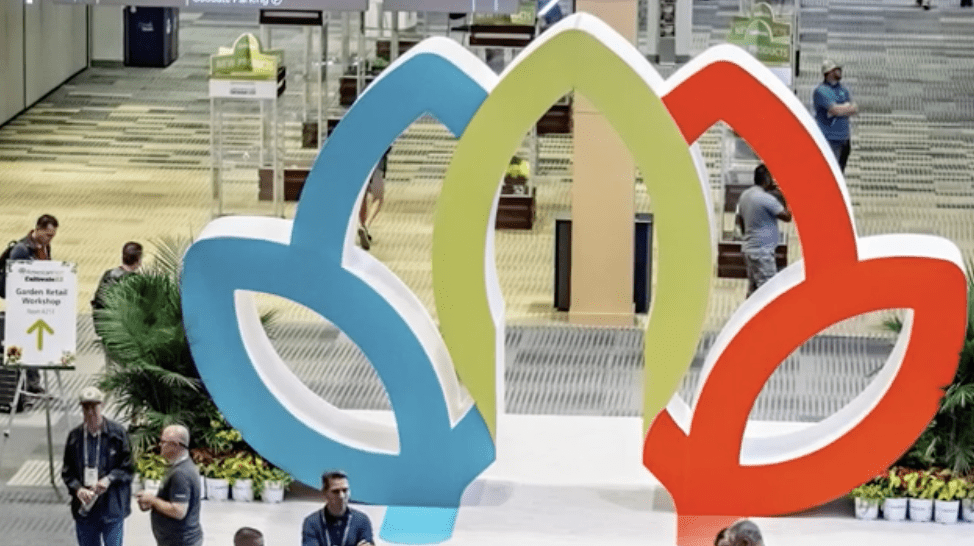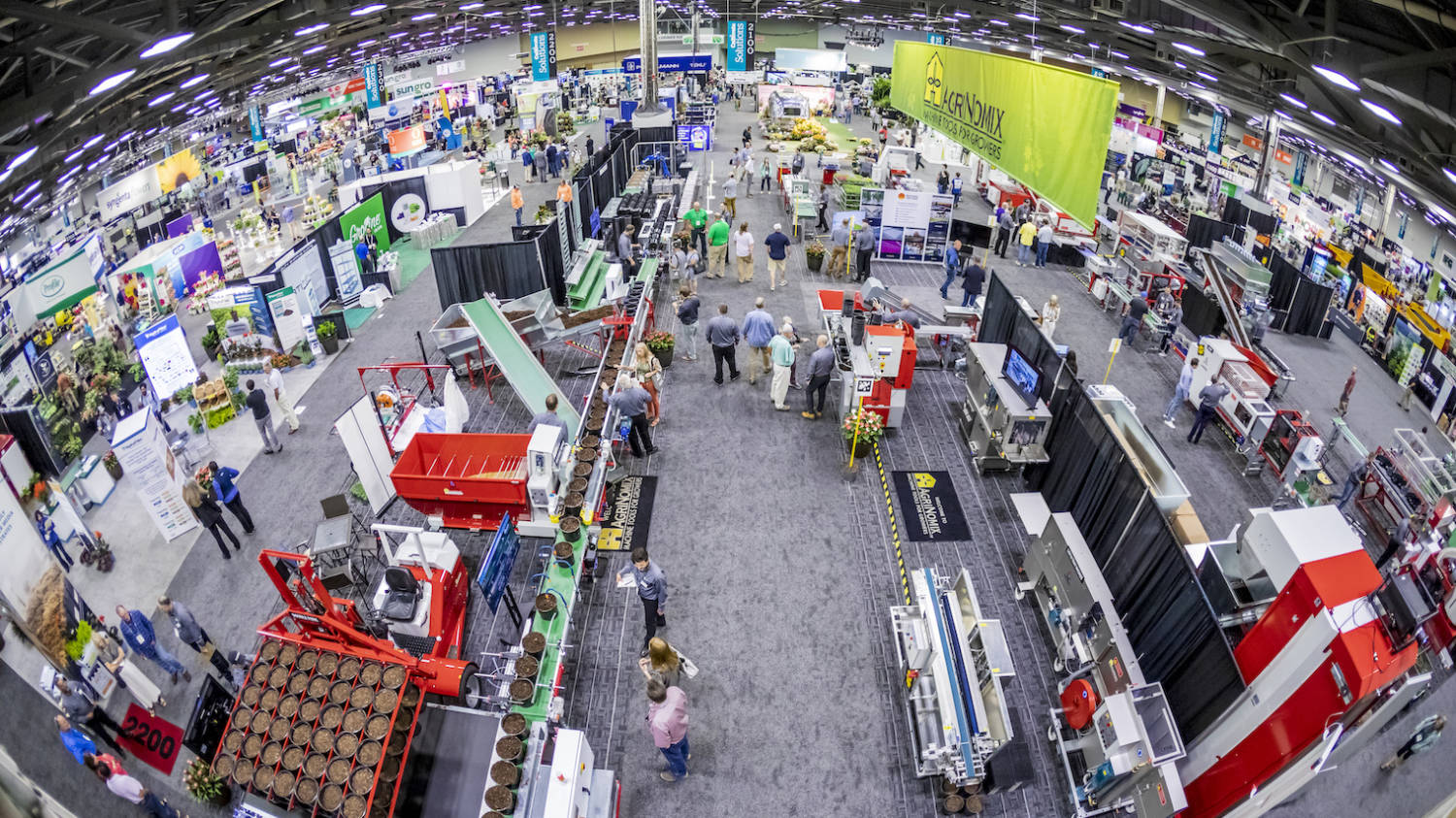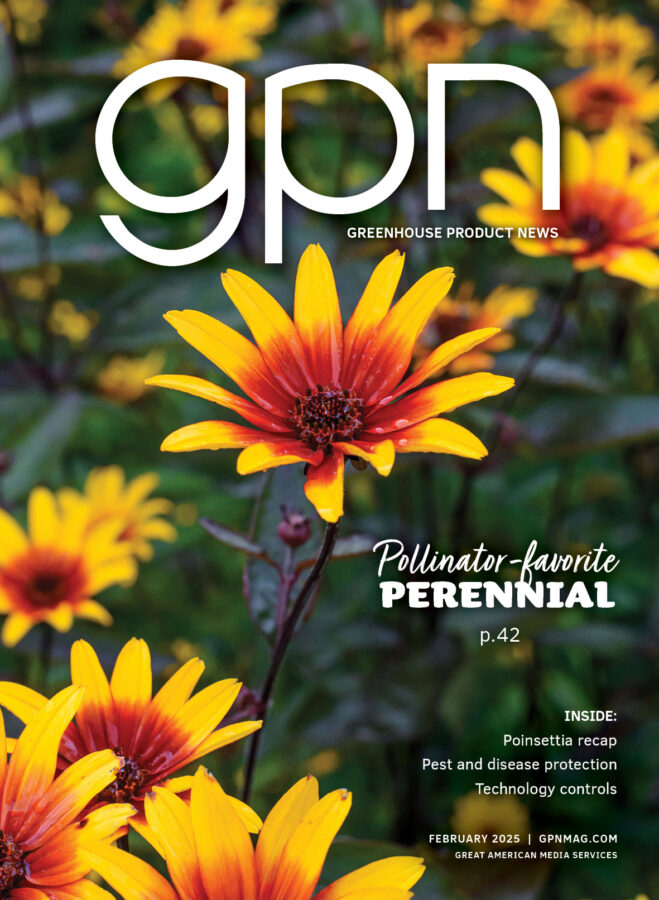Water Vapor-Pressure Deficit
The amount of water in the air (water vapor) influences the rate of water loss by plants, growing substrates and other surfaces. Relative humidity (RH) quantifies the water vapor concentration relative to the maximum humidity possible at a particular temperature and is usually expressed as a percentage. A limitation of RH is that the amount of water vapor that air can hold increases with temperature. Because of this dependence on temperature, RH is not a consistent metric to describe the potential loss of water by plants to the air.
A better way to describe the driving force for water loss is the water vapor-pressure deficit (VPD). The VPD is the calculated difference between the saturating pressure of water (when water vapor is at an equilibrium with condensation) and the actual water vapor pressure of the air. These measurements are as pressures, and for plant applications, we usually use the unit kilopascal (kPa). VPD can be calculated if you know the canopy temperature (or air temperature as an approximate substitute) and RH, or the wet- and dry-bulb temperature, using a psychometric chart or an online VPD calculator such one under the biology and then horticulture category at www. omnicalculator.com.
When the air is saturated with water vapor, the VPD is zero. This may occur when a fogging system is used inside a greenhouse, such as early during propagation of vegetative cuttings. Since the air is saturated with water, there is no driving force for water loss and so cuttings remain hydrated. When the water vapor in the air decreases, or as temperature independently increases, the VPD increases. As it increases, water loss increases through evaporation from the substrate and transpiration from the leaves.
Below are subjective VPD classifications, values and descriptions when growing plants in controlled environments. Corresponding RH values are provided; note how these values change with temperature.
Very low VPD (<0.3 kPa). In this situation, water vapor is at or near saturation. This low of a VPD occurs when the RH is above 85% at 63° F, 88% at 68° F, and 90% at 73° F. This environment is only desirable when we want slow-drying conditions, such as during propagation or cold storage of plant material. When plants are grown at a very low VPD, there is little movement of water through the plant and thus, little uptake of nutrients from the substrate. Leaves stay wet for a long time and the substrate dries very slowly, which increases the virulence of many plant pathogens.
Low VPD (0.3 to 0.7 kPa). This is the minimum desirable VPD for most plant growth applications. This VPD range occurs when the RH is 64 to 85% at 63° F, 70 to 88% at 68° F, and 75 to 90% at 73° F. The gradient that exists between leaves (which are practically saturated with water) and the air means that plants transpire at a moderately slow rate. This VPD range can be desirable during propagation once young plants have developed an initial root system. Leaves don’t stay wet for so long and there is a modest uptake of water and nutrients from the substrate. However, for some crops, especially those susceptible to tip burn, this VPD is too low.
Moderate VPD (0.7 to 1.5 kPa). This water VPD can be considered a target for most plant growth applications. The air is neither too dry nor too wet, so substrates and plants do not stay wet for long, nor do they dry very quickly. The driving force for water and nutrient movement from the roots through the shoots is moderate but usually not excessive. This VPD occurs when the RH is 24 to 64% at 63° F, 36 to 70% at 68° F, and 46 to 75% at 73° F.
High VPD (>1.5 kPa). This can be considered a “dry air” environment and so water loss from plants and their substrates is relatively rapid. This occurs when the RH is less than 24% at 63° F, 36% at 68° F, and 46% at 73° F. In some production situations, such as when plant canopies are large (e.g., high-wire vegetable production), plants may not be able to sufficiently translocate water, which can cause plants to partly close their stomata, thus decreasing water loss but also uptake of carbon dioxide. As a result, the rate of photosynthesis decreases, and the growth rate slows down.
VPD generally only becomes a crop production issue when at extremes. When the VPD is too low (less than 0.7 kPa, except during propagation), some pathogens can be more problematic and nutrient uptake may not be sufficient to meet the needs of plant growth. When the VPD is high (more than 1.5 kPa), the rate of water loss is high and in response, photosynthesis of some crops can decrease.


 Video Library
Video Library 



















